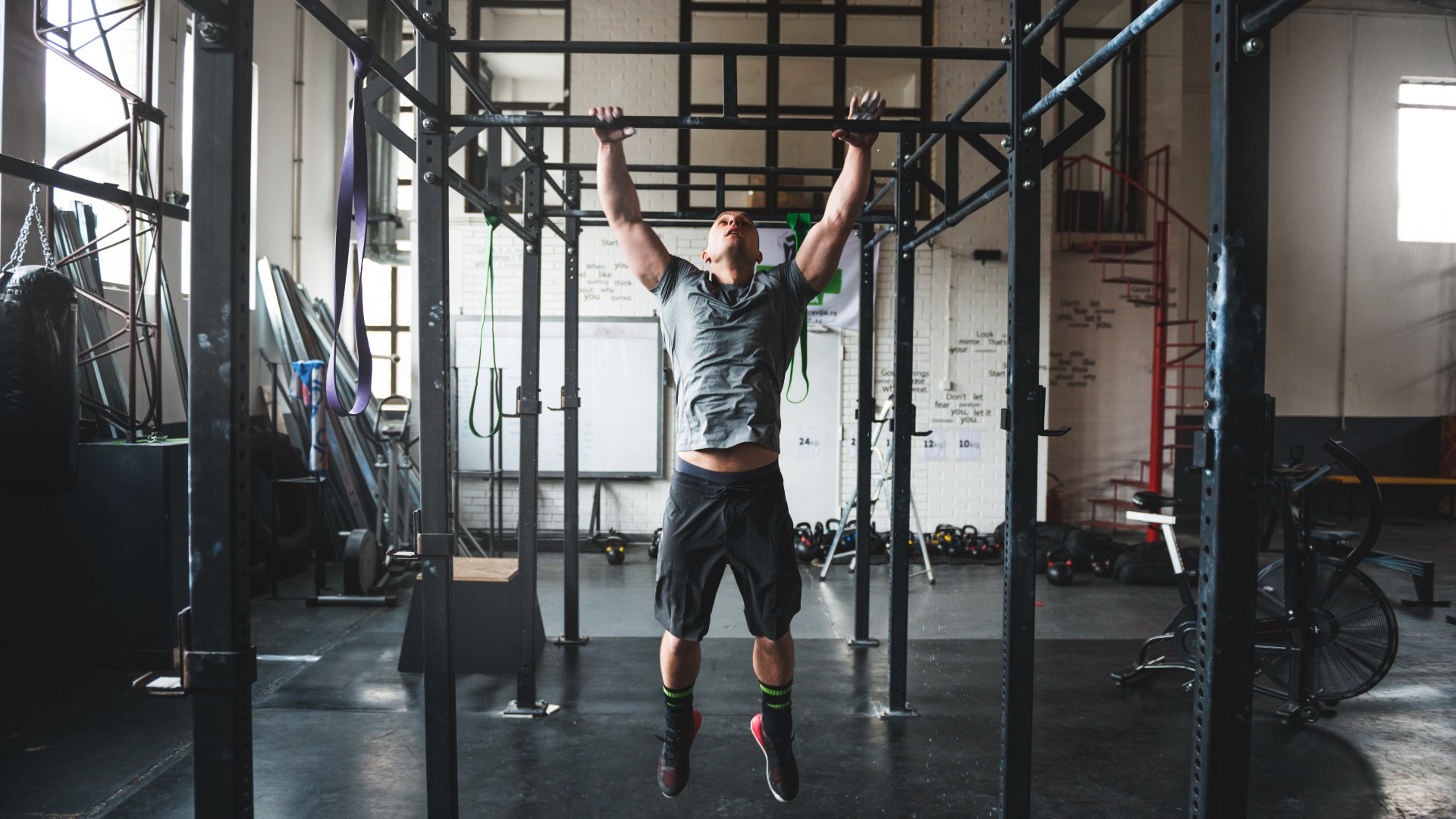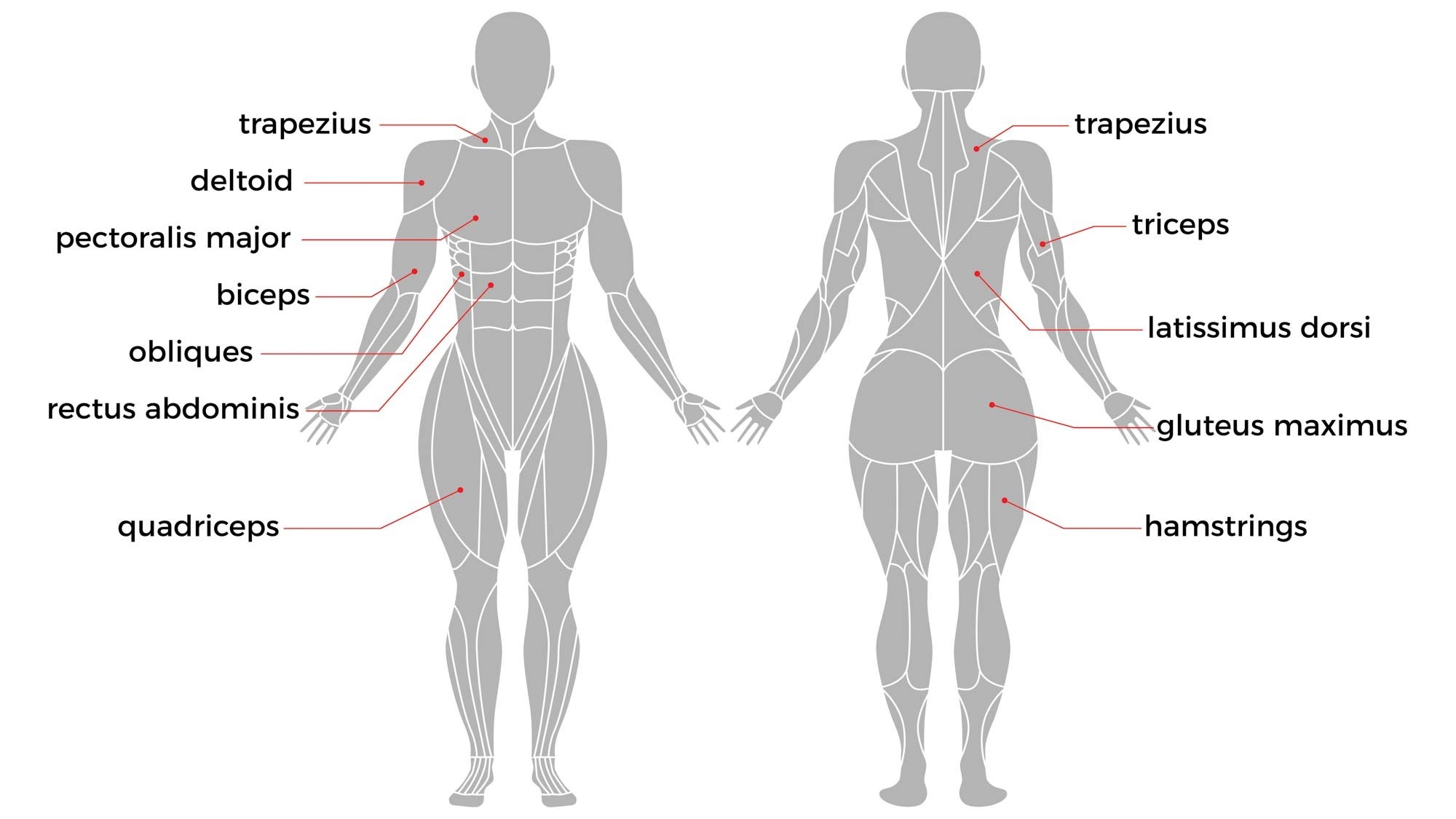
Pull-ups are one of the most common functional bodyweight exercises you can do and one of the hardest to nail. Pulling your body weight up to a bar takes serious strength, technical ability and shoulder mobility, so it’s no surprise that it’s hard to achieve and equally easy to get wrong.
We’ve previously debated pull-up vs chin-up: which is better for building strength? Both are brilliant for increasing upper body strength in your arms, back, shoulders and core, but the difference in grip will target those muscles differently: the pull-up adopts an overhand grip and a wider shoulder position to work your posterior chain (the back of your body) harder.
While the payoff is huge for strength gains (and let’s face it, pretty impressive to show your mates as well), the risk of injury is high unless you’ve locked down your technique. Unfortunately, poor form is present in just about every gym or online workout, anywhere, and you might not even realize it.
If you think you could be doing pull-ups wrong, here’s how to fix them. Whether you’re a seasoned lifter or new to the pull-up, these quick tips can be adopted right now and will help improve your pull-up technique, mobility and flexibility. Not there just yet? Learn how to do lateral pulldowns first, or read on for the most common pull-up mistakes and how to avoid them.
Pull-up: Muscles worked

Pull-ups work your biceps, pectoralis major (pecs), latissimus dorsi (lats), teres major, posterior deltoids (rear shoulders), deep core muscles, and more, with an emphasis on your lower trapezius (traps) — responsible for supporting your scapulae.
Your shoulder joint is the most unstable in your body, so you will need a degree of strength and mobility in your shoulders to safely achieve a pull-up.
How to do a pull-up
We cover this in better detail in the article above, but here’s a quick overview of how to do a pull-up properly:
Get instant access to breaking news, the hottest reviews, great deals and helpful tips.
Stand under a bar and grip with both hands in an overhand grip, hands wider than your shoulders. Wrap your thumbs around and grip with your palms rather than your fingers. Contract your whole body, draw your shoulders back and down, and hang from the bar. Give your lats an extra squeeze, slightly shrug your shoulders, then pull yourself up with your chest lifting towards the bar. Avoid swinging your body. Slowly lower back to your starting position with control. In a bid to get your chin above the bar, your body might start to find subtle cheats to get there.
Here are some common mistakes and how to fix them.
6 common pull-up mistakes
1. You’re swinging your body
A common mistake I see during pull-ups is swinging. Kipping pull-ups and butterfly pull-ups use a rolling motion (this could be mistaken as swinging) during reps, adopted by athletes in sports like CrossFit. They’re a big no-no in some gyms, but they’re very technical moves.
There are pros and cons to these pull-up variations. It’s thought they help target different muscles and build strength and endurance. However, they can also put more stress on your shoulders, upping your likelihood of injury. According to CrossFit, it’s far from a cheat and ‘expands the primary movers from the back and arms down through the torso and hips.’ It’s a gateway skill to more advanced exercises.
Swinging, on the other hand, can signal a lack of control and be a cheat for not having the necessary strength. I recommend clients develop a solid strict pull-up first to develop muscle mass, strength, core engagement and technique.
2. You’re not using the full range of motion
Without adopting a full range of motion, your lats and other muscles aren’t getting the full attention they deserve. When you perform a pull-up, ensure you fully extend your elbows at the bottom and hang from the bar. Reset your shoulders at the bottom before your next rep, but remember to keep your shoulders engaged.
Bent elbows put more strain on your arms and take the emphasis away from your primary movers. In competition, partial reps would be a no-rep, so working your muscles to their end range should keep you safe and help build strength. You might have to drop in reps, but seriously — who cares?
3. Your elbows are flaring
Elbows under the bar! If you notice your elbows flare to the sides — this is a no-go. Keep your elbows under the bar and close to your sides. It will generate an efficient pulling motion and maximize engagement through your lats.
Your grip also matters. Too wide or too narrow will affect your alignment and prohibit your range of motion. You’re then loading unnecessary strain onto your joints, pulling focus from your primary movers and reducing control of your scapulae. Rule of thumb — hands slightly wider than shoulders for pull-ups.
4. You’re not drawing your shoulders down
Before you begin a pull-up, draw your shoulder blades back and down and set them in place. Your shoulders should never shrug towards your ears, and letting them go slack could lead to injury and put more strain on your arms, including your biceps. Shoulder retraction also helps you contract your posterior chain muscles (namely, your back muscles) and work them more efficiently.
5. You’re not contracting your body
Just because some muscles aren’t associated with the pull-up, it doesn’t mean they shouldn’t be active. In your starting position, engage the muscles in your core, back, arms and legs. Keep your legs straight with quads, hamstrings, and calves all engaged.
I tell clients to imagine they’re about to be punched in the stomach. This rigidity throughout the body is more energy efficient and helps to build strength and control. In our calisthenics guide, we discuss compound contraction — activating the muscles of your whole body to create tension rather than relying solely on your upper body.
It also helps to avoid swinging, loading weight into your arms, or going into your lower back. Practice the initial lifting phase using scapula pulls (also found in our calisthenics how-to) which can help you initiate the initial pull toward the bar.
6. You're leading with your chin
Jutting your chin over the bar doesn’t exactly count as a full pull-up rep. Instead, try to lift with your chest. Achieving a chest-to-bar pull-up takes a ton of shoulder strength and mobility, but the act of reaching for that goal encourages better range of motion.
Practicing pull-ups at home? Check out this home gym equipment to deck out your space or the best resistance bands to aid pull-ups.

Sam Hopes is a level 3 qualified trainer, a level 2 Reiki practitioner and fitness editor at Tom's Guide. She is also currently undertaking her Yoga For Athletes training course.
Sam has written for various fitness brands and websites over the years and has experience across brands at Future, such as Live Science, Fit&Well, Coach, and T3.
Having coached at fitness studios like F45 and Virgin Active and personal trained, Sam now primarily teaches outdoor bootcamps, bodyweight, calisthenics and kettlebells.
She also coaches mobility and flexibility classes several times a week and believes that true strength comes from a holistic approach to training your body.
Sam has completed two mixed doubles Hyrox competitions in London and the Netherlands and finished her first doubles attempt in 1:11.

